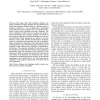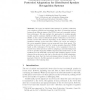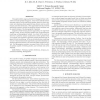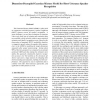77 search results - page 4 / 16 » A comparison of approaches for modeling prosodic features in... |
JMM2
2007
13 years 5 months ago
2007
— This paper deals with automatic dialogue acts (DAs) recognition in Czech. Dialogue acts are sentence-level labels that represent different states of a dialogue, such as questio...
ICBA
2004
Springer
13 years 11 months ago
2004
Springer
We apply the ETSI’s DSR standard to speaker verification over telephone networks and investigate the effect of extracting spectral features from different stages of the ETSI�...
ICASSP
2009
IEEE
14 years 15 days ago
2009
IEEE
Maximum-Likelihod Linear Regression (MLLR) transform coefficients have shown to be useful features for text-independent speaker recognition systems. These use MLLR coefficients ...
ICASSP
2011
IEEE
12 years 9 months ago
2011
IEEE
This paper presents ongoing research leveraging forensic methods for automatic speaker recognition. Some of the methods forensic scientists employ include identifying speaker dist...
ICPR
2010
IEEE
14 years 23 days ago
2010
IEEE
The Gaussian Mixture Model (GMM) is often used in conjunction with Mel-frequency cepstral coefficient (MFCC) feature vectors for speaker recognition. A great challenge is to use ...




